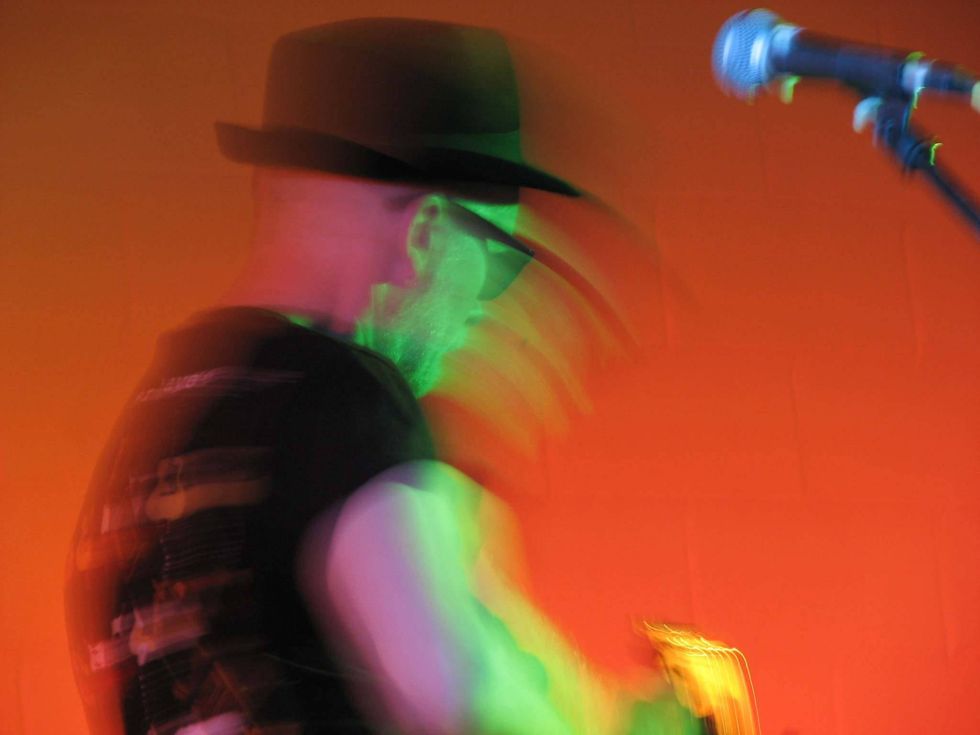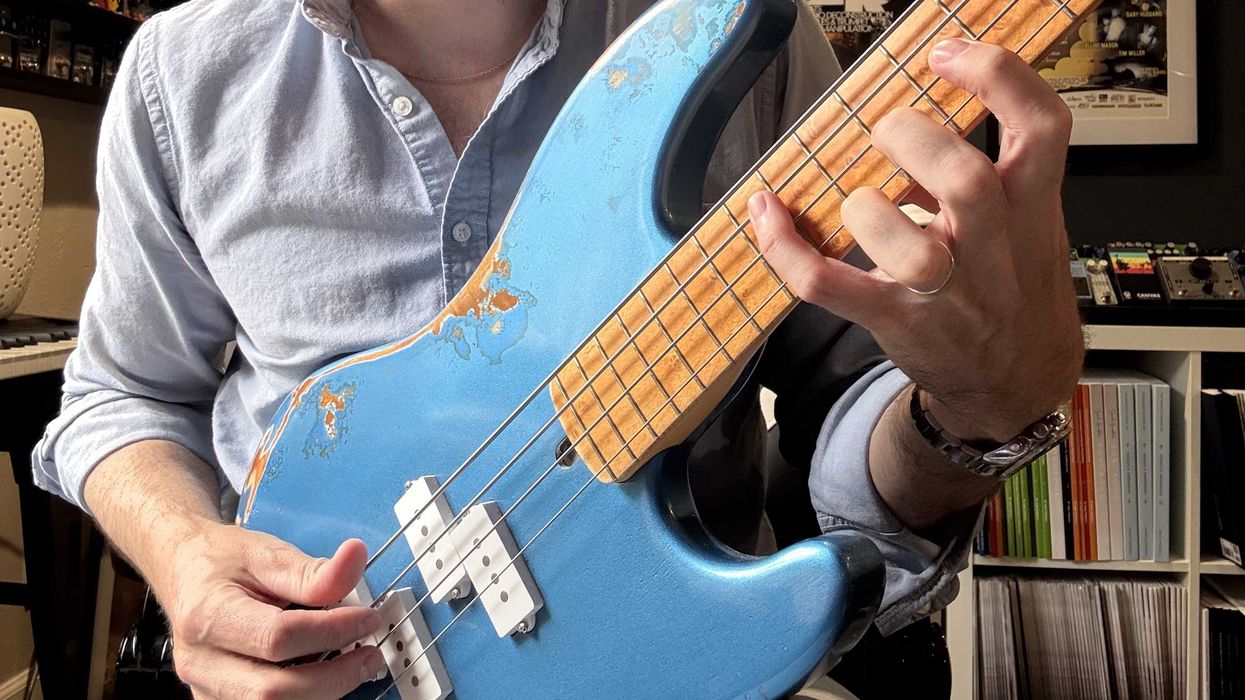I don’t know about you, but I like pedals! Everyone seems to have a favorite type, and mine are echoes. I have some friends who love all manner of fuzz pedals, others with 15 different overdrives or rotary flanges—but for me, it’s delay. In the late ’70s, I got my first pedal, which I bought used from an acquaintance/rival in another local band. It was an Electro-Harmonix Memory Man. Suddenly, early U2 and vintage Fripp secrets were revealed, and I was happy as a clam. (Hitting a lot of them, too!)
Back when I was dating my wife, she bought me an early-’70s solid-state Echoplex for my birthday. This was long enough ago—pre-internet—that Echoplexes were not the coveted gems they’re considered today. I do miss the era of oddball music shops that were half junk shop and half music store. You might find a gem if you looked long enough. That’s the type of store the Echoplex came from. It was run by a big bearded dude named Jim (sadly, R.I.P.) who drove around the region in an AMC Pacer—stuffed with funky ’60s practice amps and guitar necks peeking through the bubble glass—trading and bringing oddities back to his Chapel Hill back-alley music store.
I first met Jim while delivering pizza. I was 24 and new to North Carolina’s Southern charms. Imagine a dark and stormy night. I’m driving way out in the country searching for an address. I pull into a trailer park with a long gravel drive. There it is: the pizza’s final destination. (Was that a banjo I heard in the wind?)
I knocked on the door and the big bearded man said, “set it right in there,” pointing to his trailer’s living area. After putting the pizza down, I looked up and scanned the room: vintage Les Pauls, Strats, Les Paul Jrs. (his favorite), and you-name-it lined the walls. There was gear everywhere. (But no banjos.) Just looking at this was the best tip I’d ever gotten! He was super friendly and I got to play a handful before remembering the other hot pizzas in the bag.
I guess my point is this: The internet is amazing and wonderful, but instant access and everyone knowing everything can be overrated. We need to all support our funky local music stores as often as we can. Get to know the staff and owner. Have real encounters with others. They are fanatics just like us!
When prototyping amps, we test new designs with all sorts of pedals to see how they react. This is important, because these days being a “great pedal platform” has become one of the main virtues amp buyers seek. Sure, your amp has to sound great clean or dirty—however you like your base tone—but when someone says “it takes pedals really well,” that is essential praise. Conceptually, the thought of amps with tons of channels is appealing to me, but in practice (even with Carr Amps that channel switch) I tend to just stick with one glorious channel and have the pedals do the heavy lifting. That is my personal preference, and, from my perspective as an amp manufacturer, the rise and reacceptance of single-channel amps is the biggest trend I’ve witnessed in the past 15 years. I wonder if folks now think more of the guitar/amp as their basic tone unit, while wanting pedals to offer infinite variables and tweaks?
So, what makes an amp take pedals well? I believe clarity and high initial headroom have a lot to do with it. These qualities allow the flavor to come through, plus the preamp can then deal with complex signals from multiple effects without sounding congested. I’ve found that really high-quality filter capacitors in the preamp, in particular, opens up an amp—helping it remain dynamic when pressed. And to me, a high-quality power supply is where the juice lives!
Something that has worked very well for my tone and setup is using a clean boost pedal. I leave it on at all times, set to just give a mild bump, and it sounds good anywhere in the chain. Lately, I like using a clean boost as the last pedal on my board, right before the amp—like a pedalboard output supercharger. It really keeps the sound tight and punchy. This probably has something to do with their low-output impedance, which will drive a long cable without loss back to the amp. This is true especially if you’re using a lot of other pedals at the same time. Give it a try and see what you think.

















